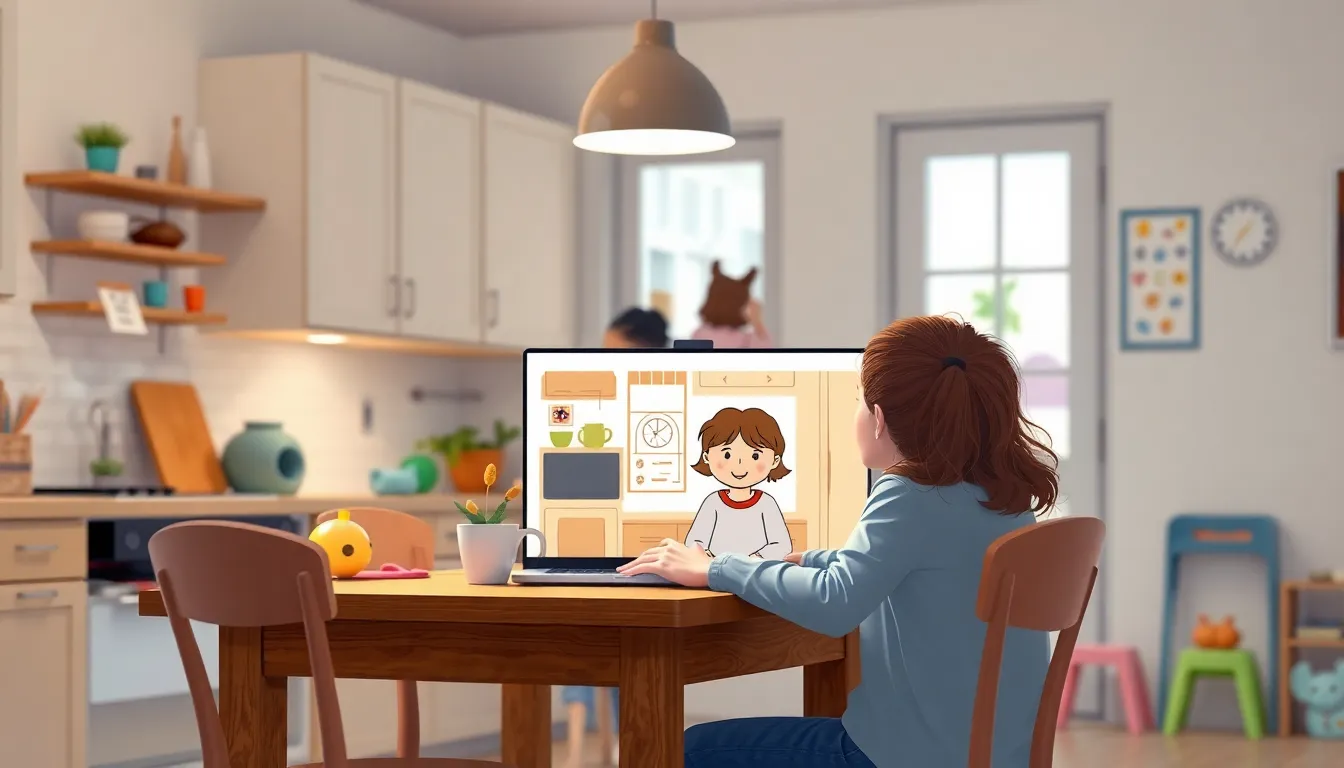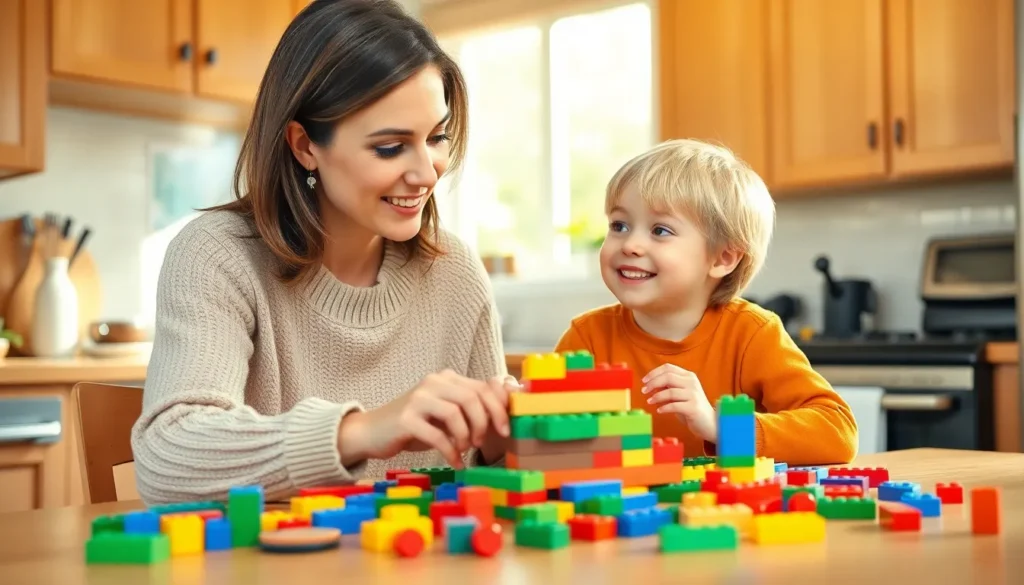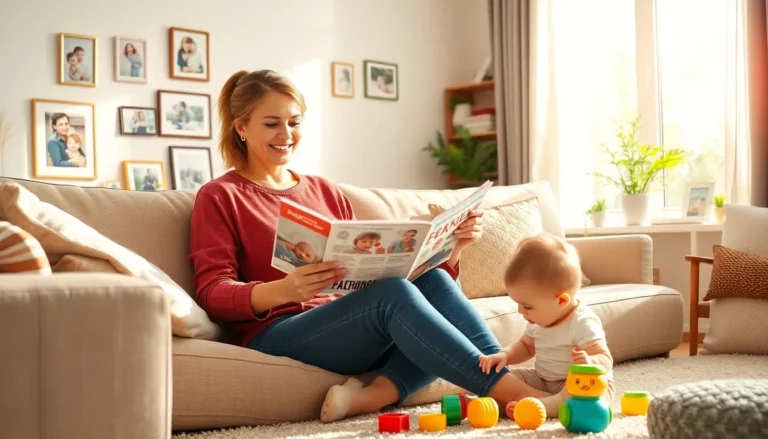Table of Contents
ToggleNavigating the world of parenting after a separation can feel like trying to assemble IKEA furniture without the instructions. Enter the sole custody parenting plan—a roadmap for single parents that not only keeps the peace but also ensures the kids thrive. It’s like having a GPS for co-parenting, guiding parents through the twists and turns of daily life.
Understanding Sole Custody Parenting Plans
Sole custody parenting plans serve as essential frameworks for single parents navigating post-separation challenges. These plans provide clear guidelines for raising children effectively within a single custody arrangement.
Definition of Sole Custody
Sole custody refers to a legal arrangement where one parent has exclusive physical and legal responsibility for a child. This parent makes all significant decisions relating to the child’s upbringing, education, and welfare. Oftentimes, sole custody emerges in situations where the other parent cannot fulfill parenting duties due to various circumstances. Courts typically award sole custody in cases of instability, neglect, or abuse. The primary focus remains on the child’s best interests, ensuring stability and security in their home environment.
Key Differences Between Sole and Joint Custody
Sole custody differs significantly from joint custody, primarily concerning parental rights and responsibilities. In sole custody, one parent has full authority over decision-making, while joint custody involves shared responsibility and collaboration between both parents. Parenting time also varies; sole custody often means limited visitation for the non-custodial parent. Additionally, joint custody emphasizes co-parenting, fostering communication and partnership, while sole custody prioritizes a single parent’s discretion and autonomy. Each arrangement comes with unique advantages and challenges related to the child’s emotional well-being and parental engagement.
Components of a Sole Custody Parenting Plan

A sole custody parenting plan outlines essential elements to ensure effective child-rearing. These components facilitate structured parenting and prioritize the child’s well-being.
Parenting Time Arrangements
Parenting time arrangements specify when the child spends time with each parent. Typically, sole custody results in a defined visitation schedule for the non-custodial parent. This schedule includes specific days and times, ensuring the child maintains a relationship with the non-custodial parent when appropriate. Flexibility is vital, allowing adjustments for special events or unforeseen circumstances. The plan should clearly detail holiday schedules, vacations, and other significant occasions.
Decision-Making Authority
Decision-making authority grants one parent exclusive rights to make important decisions regarding the child’s education, health care, and upbringing. This structure helps avoid conflicts that can arise from differing opinions. In sole custody, the custodial parent holds full legal responsibility, ensuring all choices align with the child’s best interests. The plan can also outline processes for addressing decisions that require input from the non-custodial parent, fostering cooperation where possible.
Communication Methods
Effective communication methods establish how parents will interact regarding their child’s needs. Written communication, like emails or messages, often proves beneficial for maintaining clarity. Regular updates on the child’s well-being help both parents stay informed, regardless of the parenting arrangement. The plan can indicate preferred communication channels and expected response times, promoting a healthy co-parenting relationship and minimizing misunderstandings.
Benefits of a Sole Custody Parenting Plan
Sole custody parenting plans provide significant advantages for children and custodial parents. These benefits enhance stability and simplify the decision-making process.
Stability for the Child
Stability is crucial for a child’s growth and emotional health. Sole custody offers a consistent environment, minimizing changes that could disrupt a child’s routine. Children thrive when they have predictable schedules and secure attachments. This arrangement reduces the chances of emotional distress related to divided attention or conflicting parenting styles. Stability encourages children to develop a sense of safety, fostering better academic performance and social interactions. When one parent takes the lead, it sets clear expectations, allowing children to focus on their development without external turmoil.
Simplified Decision Making
Simplified decision-making stands out as a major benefit of sole custody. The custodial parent assumes full responsibility for crucial choices concerning education, health, and overall well-being. This streamlined process eliminates delays caused by disagreements, ensuring timely responses to emergencies and opportunities. Parents can act swiftly when decisions arise, fostering a proactive approach to parenting. Having a single decision-maker creates consistency in upbringing, enhancing the child’s sense of security. Clarity in decision-making channels parental energy towards constructive engagement in the child’s life rather than navigating disputes.
Challenges of Sole Custody Parenting Plans
Sole custody parenting plans present unique challenges for families navigating post-separation life. Understanding the complexities involved is crucial for maintaining a healthy environment for children.
Potential for Conflict with the Non-Custodial Parent
Conflict often arises between the custodial parent and the non-custodial parent regarding decision-making and parenting time. Misunderstandings can occur when communication isn’t clear. The non-custodial parent may feel sidelined or excluded from important discussions, leading to feelings of resentment. Disagreements about visitation schedules can further complicate matters, especially if one parent views arrangements as inflexible. Establishing guidelines for respectful communication and ensuring transparency can help mitigate these conflicts.
Emotional Impact on the Child
Children in sole custody arrangements may experience various emotional challenges, including feelings of abandonment or anxiety. They might perceive the lack of involvement from the non-custodial parent as a rejection. These emotional responses can lead to difficulties in relationships and affect their overall mental health. Stability is essential, but constant shifts in parenting time can exacerbate these feelings. Ensuring open conversations about their emotions and providing reassurance will support the child’s emotional well-being.
Navigating the complexities of parenting after separation can be challenging. A sole custody parenting plan serves as a crucial resource for single parents, offering clarity and structure in their parenting journey. By establishing clear guidelines for decision-making and communication, these plans not only promote stability for children but also streamline the custodial parent’s responsibilities.
While challenges may arise, prioritizing open communication and emotional support can significantly enhance the co-parenting experience. Ultimately, a well-structured sole custody parenting plan lays the foundation for a nurturing environment where children can thrive, ensuring their emotional and developmental needs are met.







